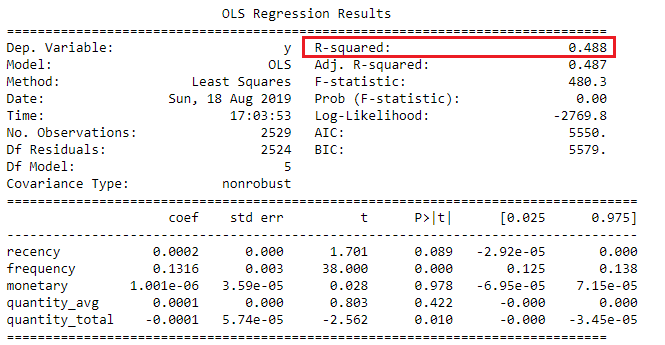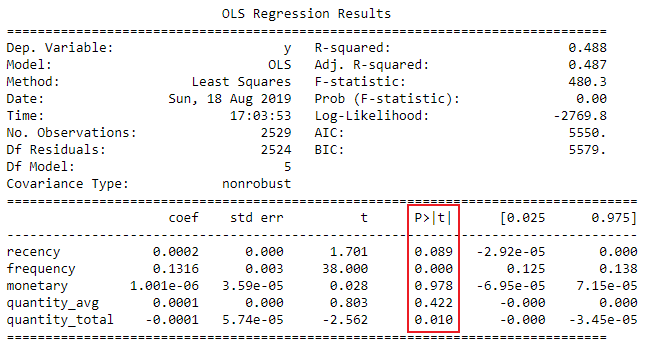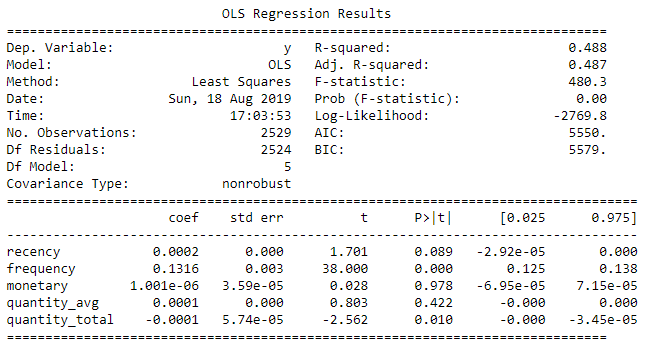Predicting customer transactions
Machine Learning for Marketing in Python

Karolis Urbonas
Head of Analytics & Science, Amazon
Modeling approach
- Linear regression to predict next month's transactions.
- Same modeling steps as with logistic regression.
Modeling steps
- Split data to training and testing
- Initialize the model
- Fit the model on the training data
- Predict values on the testing data
- Measure model performance on testing data
Regression performance metrics
Key metrics:
- Root mean squared error (RMSE) - Square root of the average squared difference between prediction and actuals
- Mean absolute error (MAE) - Average absolute difference between prediction and actuals
- Mean absolute percentage error (MAPE) - Average percentage difference between prediction and actuals (actuals can't be zeros)
Additional regression and supervised learning metrics
R-squared - statistical measure that represents the percentage proportion of variance that is explained by the model. Only applicable to regression, not classification. Higher is better.
Coefficient p-values - probability that the regression (or classification) coefficient is observed due to chance. Lower is better. Typical thresholds are 5% and 10%.
Fitting the model
# Import the linear regression module from sklearn.linear_model import LinearRegression# Initialize the regression instance linreg = LinearRegression()# Fit model on the training data linreg.fit(train_X, train_Y)# Predict values on both training and testing data train_pred_Y = linreg.predict(train_X) test_pred_Y = linreg.predict(test_X)
Measuring model performance
# Import performance measurement functions from sklearn.metrics import mean_absolute_error from sklearn.metrics import mean_squared_error# Calculate metrics for training data rmse_train = np.sqrt(mean_squared_error(train_Y, train_pred_Y)) mae_train = mean_absolute_error(train_Y, train_pred_Y)# Calculate metrics for testing data rmse_test = np.sqrt(mean_squared_error(test_Y, test_pred_Y)) mae_test = mean_absolute_error(test_Y, test_pred_Y)# Print performance metrics print('RMSE train: {:.3f}; RMSE test: {:.3f}\nMAE train: {:.3f}, MAE test: {:.3f}'.format( rmse_train, rmse_test, mae_train, mae_test))
RMSE train: 0.717; RMSE test: 1.216
MAE train: 0.514, MAE test: 0.555
Interpreting coefficients
- Need to assess statistical significance
- Introduction to
statsmodelslibrary - Gives in-depth model summary
Build regression model with statsmodels
# Import the library import statsmodels.api as sm# Convert target variable to `numpy` array train_Y = np.array(train_Y)# Initialize and fit the model olsreg = sm.OLS(train_Y, train_X) olsreg = olsreg.fit()# Print model summary print(olsreg.summary())
Regression summary table
Interpreting R-squared

Interpreting coefficient p-values

Let's build some regression models!
Machine Learning for Marketing in Python


